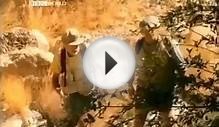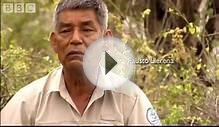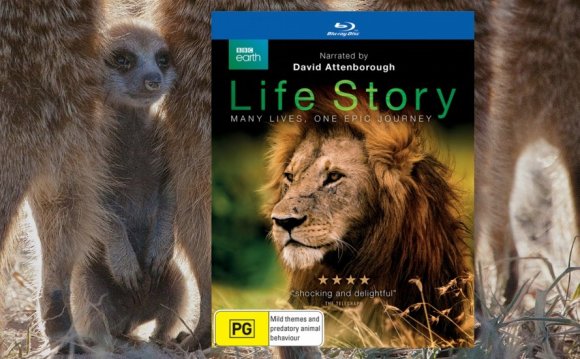
The Huffington Post dug into "The Making of Planet Earth" documentary and talked with some of the producers to see how they were able to capture the incredible shots we see in the series. It wasn't easy. The team following gibbons around the jungle suffered 50 to 100 leech bites per day, producer Tom Hugh-Jones told HuffPost, and their subjects were easily spooked by the sight of cameras. Other teams faced gail-force Arctic winds and the threat of sharks in the open ocean.
But the "Planet Earth" team did have one luxury: time. As the network's most expensive documentary to date - $25 million over five years - each shot was painstakingly produced. Cameraman Andy Shillabeer told HuffPost how he spent weeks and months creating time-lapse footage of cherry blossoms in Japan, desert flowers in Death Valley and leaves changing in the Northeast U.S. All for footage that would fill just seconds in the final cut.
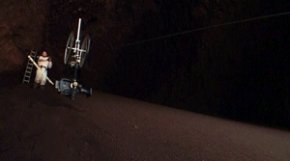 Here are some other incredible stories from the making of one of our favorite nature documentaries:
Here are some other incredible stories from the making of one of our favorite nature documentaries:
Producers picnicked together when working on "Caves." Three weeks into filming, they realized the drops of liquid that would fall from the ceiling onto their lunch were bat pee.
Courtesy of BBC Home Entertainment.
The team spent a month living in Borneo's caves - the most putrid filming experience out of anyone who worked on "Planet Earth." Among the animal excrement, the caves were filled with millions of cockroaches and venomous centipedes that moved like lightning, according to production assistant Chadden Hunter. "It was generally a month living like Gollum, " he told HuffPost. Getting down into the caves took over an hour of sliding and contorting themselves between the rocks, and even armed with white bodysuits, creepy crawlies would still sometimes find their way into the filmmakers' clothing. At any moment, too, shiny blue snakes could drop from the ceiling "like Indiana Jones and the Temple of Doom, " Hunter recalled.
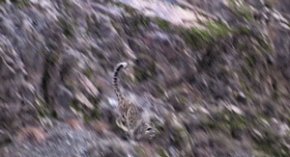 As the filmmakers sought to film the world's largest pile of guano, they were challenged by the fact that walking the camera up the mound was impossible - they'd sink right in. So the team improvised, Hunter explained, rigging a 100-meter cable alongside the poo so they could pull the camera up for a shot as smooth as any of the series' trademark aerial scenes. But more disgusting.
As the filmmakers sought to film the world's largest pile of guano, they were challenged by the fact that walking the camera up the mound was impossible - they'd sink right in. So the team improvised, Hunter explained, rigging a 100-meter cable alongside the poo so they could pull the camera up for a shot as smooth as any of the series' trademark aerial scenes. But more disgusting.
"Planet Earth" crew filmed that dramatic snow leopard hunting scene on the border of Pakistan and Afghanistan when the world was hunting for Al Qaeda.
The snow leopard scene is the result of three years' worth of effort by a total of eight crew members and 20 local trackers. Numbering only 3, 000 to 7, 000 in the wild, snow leopards live in the high mountains around central Asia. Producer Doug Allan spent nearly three months in northern India trying to capture the animal, and came away with an hour of snow leopard footage - asleep for nearly all of it.
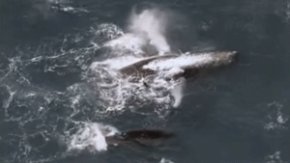 Later, after a year of delays due to the international terrorist manhunt, filmmakers tried their luck on the border of Afghanistan and northern Pakistan. They dressed like locals to blend in, but for six weeks, saw nothing.
Later, after a year of delays due to the international terrorist manhunt, filmmakers tried their luck on the border of Afghanistan and northern Pakistan. They dressed like locals to blend in, but for six weeks, saw nothing.
"We're sleeping in caves up in the mountains, " Hunter explained. "Then you start looking at yourself in the mirror and see your beard growing and think, 'Uhh, maybe this is not really the best look to have as the world is looking for Bin Laden and we're up here filming snow leopards.'" As they began to lose hope, producer Mark Smith relocated the camera gear to a different spot in the mountains on a tip from locals, and the team was finally rewarded with a shot of a snow leopard and her cub. Finally, as they were about to pack up for good, the dramatic hunt scene unfolded (shown above).
Producers dragged all their camera equipment two miles in 100-mile-per-hour winds to film penguins in Antarctica.
We bet it felt like going uphill both ways, too. With gale-force winds and temperatures over 100 degrees below zero, the struggle to reach the penguins' colony was a difficult one for filmmakers Wade Fairley and Frederique Olivier, who spent a year living near 20, 000 Emperor penguins.
"I really feel quite sorry for them at this moment, " Fairley says into the camera as the team warmed up in their hut. When the filmmakers reached the animals, they found them huddled close together to block out the weather, rotating members from the outside in when they got too cold.
Curious, 30-ton humpback whales would hurtle past the crew's boat, precisely missing every time.
"We went into a battle zone, " while filming a mother humpback whale and her calf, producer Mark Brownlow told HuffPost. Male humpbacks were trying to mate with females, in the process bulldozing their way past the boat in the water. Brownlow recounted some of the "hairy moments" the team had trying to film the mother-calf duo, but cited the whales' intelligence and spacial awareness for keeping the crew safe.
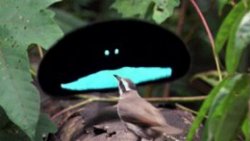
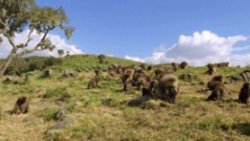
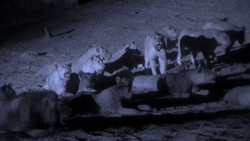
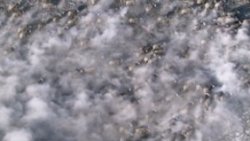
RELATED VIDEO
